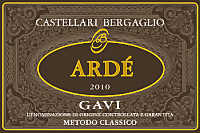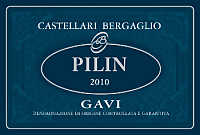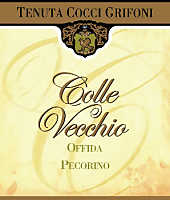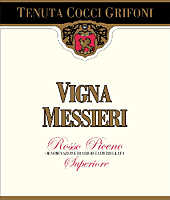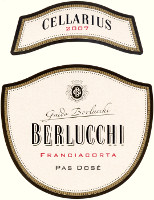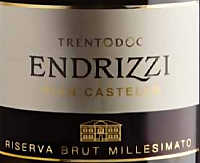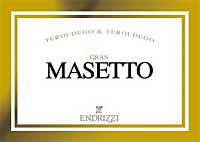|
Wine is a living beverage and in continuous evolution. Like persons, wine born,
grows up and “dies” according to time and conditions of life. In this
specific case, for life conditions are intended all those productive and
keeping processes, from vineyard to glass. These factors will in fact determine
the possibilities of development as well as the expectations of evolution
according to time. The transformation wine undergoes during all of its
evolution are frequently radical ones, also eliminating its young character
when tasted after some years. This process, of course, is not infinite: wine,
unavoidably, will reach its top of evolution and it will then proceed to its
inexorable decay. Before this condition happens, wine is however in continuous
evolution and offering different sensorial qualities.
Time in which is realized the life of a wine is pretty variable. There are in
fact wines capable of properly evolving for more than fifty years, whereas
others can barely reach three years. Wines capable of standing to time - it
should be clearly said - must be produced with this specific goal in mind, a
process having no compromises and beginning in the vineyard. In every case,
each variety has its own possibilities of evolution in time: also in case we
are using the same productive criteria, every grape will hardly evolve beyond
its own limits. For example, it is quite unlikely a wine made from Grignolino
grape can significantly evolve for fifty years, something which can happen for
a wine produced with Cabernet Sauvignon.
In general terms, red wines have a better longevity than white wines, however
it should be noticed there are some white wines capable of properly evolving
for ten years, in rare case, even more. Among the wines having the best
longevity, there also are sweet and fortified wines. To determine the longevity
of a wine, first of all, we have the specific characteristics of grapes and, in
particular, the presence and quantity of specific substances. These substances
are therefore reinforced or attenuated during the phases of
vinification, therefore the longevity of a wine is always the result of grape
qualities and the procedures used in wine making. Like already said, Cabernet
Sauvignon is a grape potentially capable of making wines of remarkable
longevity. This characteristic can however be lost by using improper and
ordinary viticultural and wine making procedures.
|
 | |
| Casks and barriques are the containers in
which oxygen and time favor the evolution of wine | |
|
Given the right viticultural, enological and keeping conditions, time
frequently works miracles in wine, by creating organoleptic profiles of
extraordinary and rich complexity. On this regard, it should be defined the
concept of time associated to wine. The concept of age connected to wine
cannot be in fact measured in absolute terms like we do, for example, for
persons. Every wine, every grape, every area - as to mention the main factors -
are measurable in absolutely specific terms, by defining the specific ages and
seasons according to each condition. We cannot in fact say - for example -
every wine after three years must be considered still young, as this evaluation
is strictly associated to quality and characteristics of each of them. A red
wine, for example, can be considered still young after three years, but the
same cannot be usually said for most of white wines.
We can certainly talk about youth, maturity and decay for each wine, while
considering the time in which can happen these conditions is always definable
according to each case. Wines, also in case are produced with the same grapes
and wine making techniques, can have different evolutions in the course of
time, therefore their lifespan can be different. The discriminating factor, in
this case, is represented by territory, the exposition of vineyards,
micro-climate and composition of soil, as to mention the main factors.
Territory, among the most important and determinant factors of quality and wine
expression, affirms - also in this case - its fundamental importance. This
means that, in a specific appellation, each single part of the territory, each
cru, has, not only its own and specific organoleptic characteristics,
but it can frequently make wines with different longevity.
Factors determining the lifespan of a wine, besides the indispensable
viticultural and keeping conditions, are many. The elements making a wine,
besides defining its sensorial profile, determine in a good part its
possibilities of evolution in time. The quantity of acidic substances, sugar,
alcohol, carbon dioxide and polyphenols, determine in a good part the lifespan
of a wine in a bottle. The keeping properties of these elements in fact allow
the wine to stay alive, while allowing - at the same time - its
evolution. The keeping properties of these substances are not infinite, as,
with time, they undergo chemical modifications caused, for example, by the
interaction with oxygen and light. The modifications these substances receive
in the course of time affect - as a matter of fact - the sensorial evolution of
every wine.
This evolution can be easily understood in red wines, in which polyphenols are
found in significant quantity. Let's consider, for example, the same red wine
and produced in two different vintages, possibly with a difference of five
years. The younger wine will taste more aggressive and astringent than the more
mature one, in which astringency will be less aggressive and with a more
pronounced roundness. The mitigation of astringency is the result of the
molecular transformation of polyphenols occurring with time. During youth, the
molecules of polyphenols have a smaller size and therefore they can better do
their astringent action. With time, they tend to polymerize, therefore
increasing their size, with the result of attenuating the characteristic
astringency, while producing a rounder and smoother tactile sensation.
The effect of time, as well as the good condition of keeping, can be
determined, with a good approximation, by watching the appearance of wine. The
change of color and transparency give in fact a measure of the age of wine,
both in function of the specific style and in terms of keeping. With time, the
color of wine, of any wine, tends to change its hue, by following a specific
cycle according to style. In white wines, color tends to get darker and darker
hues, up to getting a dark amber color which can also tend to brown. In red
wines the change occurs differently, that is it gets a progressively lighter
color as time goes by. In young red wines, in fact, colors are pretty dark and
strongly characterized by blue and purple nuances, whereas with time, the red
hue tends to get lighter up to getting an orange hue.
Also transparency of wines, in particular red ones, changes with time. The
example used above about polyphenols, is mainly responsible of this change.
Polymerization of molecules, besides determining an increasing in size, also
determines an increasing in weight, with the result they precipitate to the
bottom while making the wine more transparent. This phenomenon can be easily
observed by controlling the presence of the sediment in the bottom of the
bottle. The formation of sediment takes place also in case of young wines which
did not undergo any filtering process. In both cases it is not a fault but a
simple condition of the wine - most of the times, a precise wine making choice
- which does not alter the quality of wine. Finally, as for the changes of wine
appearance taking place in the course of time, a fundamental role is played
both by light and oxygen.
The action of oxygen, as well as time, is one of the main factors responsible
of the transformation - better to say, evolution - of wine aromas. Oxygen works
its transformation on wine's aromatic qualities since the very first moments of
its production, that is when the grape is being crushed in order to get the
must, because of the effect of oxidation. Oxygen will in fact be part, in a
more or less effective way, of the whole life of a wine. The quality of
the changes made by oxygen in wine is mainly determined by its quantity and,
like to say, the “violence” of its impact. In case the action of oxygen is
done in a long time and slowly, a condition taking place only with very low
quantity of oxygen, the effects on wine are generally considered as positive.
The excess of oxygen is generally considered as a negative factor, except for
those wines in which oxidation is a main and wanted quality, such as Marsala or
Jerez.
The positive effect of oxygen in wine is mainly done during the aging in wood
containers, such as the cask and barrique. Oxygen, by passing through the pores
of the wood, gets in contact with wine therefore determining its oxidation. The
quantity of oxygen passing through the pores is however very low, therefore its
impact will be limited and for a pretty long time. The action of oxygen also
continues inside the bottle sealed with a cork. For the same reason happening
inside a cask, oxygen passes through the pores of cork in very low quantity and
reaches the wine, therefore allowing its evolution and aging. The effect of
oxygen on aromas is mainly evident in those recalling fruits. With time and
with oxygen, these aromas lose their typical freshness in order to get a
more mature character, frequently recalling dried fruits or jam.
Time also favors the development of wine aromas generally defined as
tertiary enriching it with pretty complex sensations. A complexity which
can be perceived to the nose and, therefore, to the taste of wine as well. In
white and sparkling wines, time smooths the cutting acidity and gives a rounder
wine, a roundness we also find in mature red wines, in which it is the
astringency to attenuate its presence in the glass. Finally, as for the aging
and time, it should be noticed this condition is usually positive for some
wines, red and sweet wines in particular, in which youth represents an
aggressive and non truly balanced period. In these wines will in
fact be time and, like to say, the wisdom of waiting to give a fully
developed and harmonic character. It must be said, these are wines of higher
quality and produced with the specific goal to amaze over time.
|


